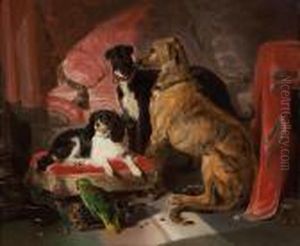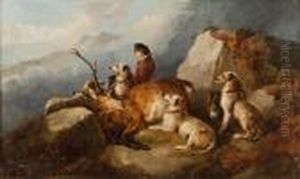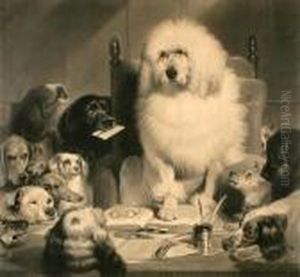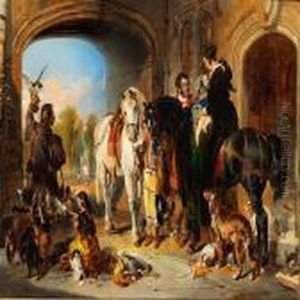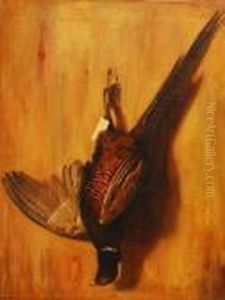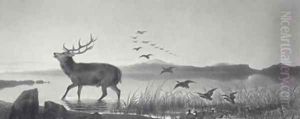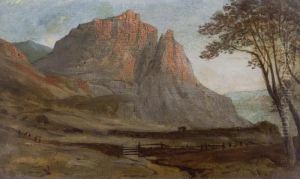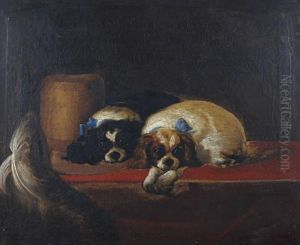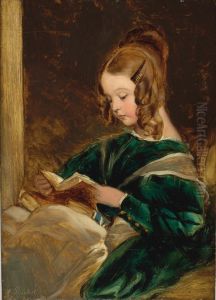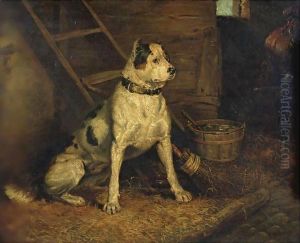Landseer, Sir Edwin Paintings
Sir Edwin Henry Landseer was a notable 19th-century British painter, well-known for his paintings of animals—particularly horses, dogs, and stags. Born in London on March 7, 1802, Landseer was a prodigy in the arts, showing exceptional skill from a young age. He was the son of the engraver John Landseer A.R.A. and was encouraged in his artistic talents early on.
Landseer began studying with his father and later enrolled at the Royal Academy Schools at the mere age of 14, which was a testament to his remarkable talent. He quickly established himself as a brilliant animal painter and received commissions from aristocratic patrons, including Queen Victoria, who had a well-known fondness for animals. His ability to depict the animals with personality and emotion made his work especially appealing to the Victorian public.
Throughout his career, Landseer's work was characterized by a blend of realism and anthropomorphism, which helped to popularize animal subjects in art. He was particularly adept at capturing the nobility and character of his subjects, often imbuing them with almost human emotions and expressions. His most famous works include 'The Monarch of the Glen' (1851), depicting a majestic stag, and 'The Highland Shepherd's Chief Mourner' (1837), a touching portrayal of a dog grieving its master.
Landseer's talent was recognized with numerous accolades. He was elected an Associate of the Royal Academy (A.R.A.) at the age of 24 and became a full Royal Academician (R.A.) just five years later. In 1850, he received a knighthood from Queen Victoria, becoming Sir Edwin Landseer. His influence was such that he was involved in the design of the lion sculptures at the base of Nelson's Column in Trafalgar Square, London.
Despite his success, Landseer struggled with mental health issues later in life, which affected his work. Nevertheless, his reputation as one of the foremost animal painters of his time remains. Landseer passed away on October 1, 1873, and left behind a legacy that had a lasting impact on the portrayal of animals in art. He is remembered not only for his remarkable skills as an artist but also for the empathy and depth he brought to his animal subjects.















